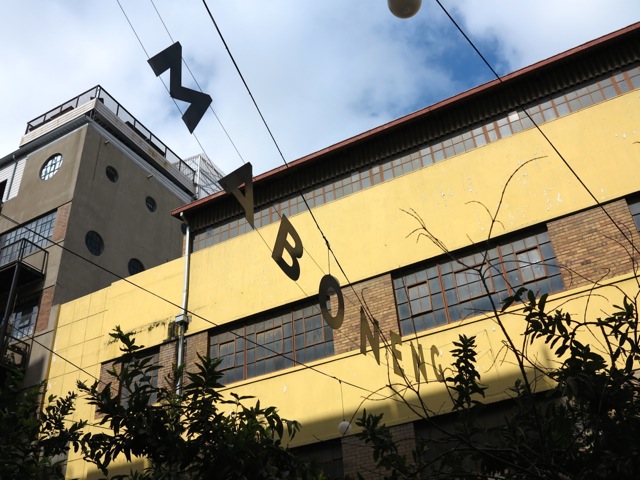Maboneng is now a model of urban regeneration and co-existence. This neighbourhood is also the world’s biggest urbanisation project led by a private company.
Cosmopolitan, festive and creative, the overriding atmosphere in Maboneng doesn’t only seduce its inhabitants – who are rapidly increasing in numbers – but it also satisfies visitors who come to the precinct to enjoy its bars, restaurants, art galleries and showrooms of local designers.
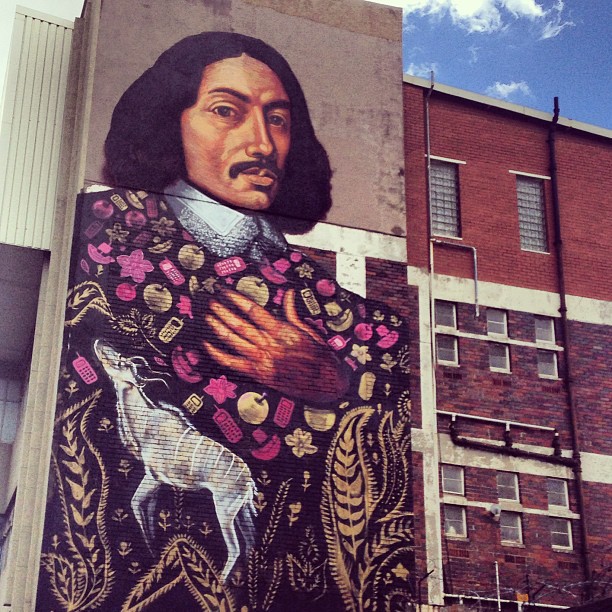
A tour around this artistic neighbourhood in the heart of Joburg, which has become a model of urban regeneration and co-existence, will offer an unbeatable perspective.
Maboneng: “place of light” in Sotho.
Nowadays, by visiting Maboneng, it’s hard to imagine that just a few years ago it was a labyrinth of unhospitable streets and abandoned warehouses: in just one decade, thanks to the initiative shown by a visionary real estate entrepreneur, the neighbourhood has completely changed.
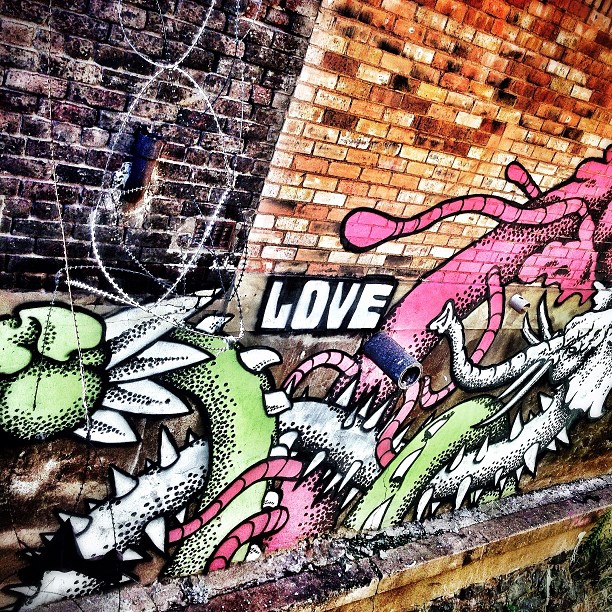
Johannesburg residents saw how ‘the city of tomorrow’ rose from the ashes of yesterday, and how the old industrial district, located in the eastern part of the central commercial district, became a welcoming and stimulating place of interest.
The abandoned factories and workshops have been converted into loft-style buildings – renovated with steel, glass and cement – aiming to change the appearance of the structures without severing ties with the past.
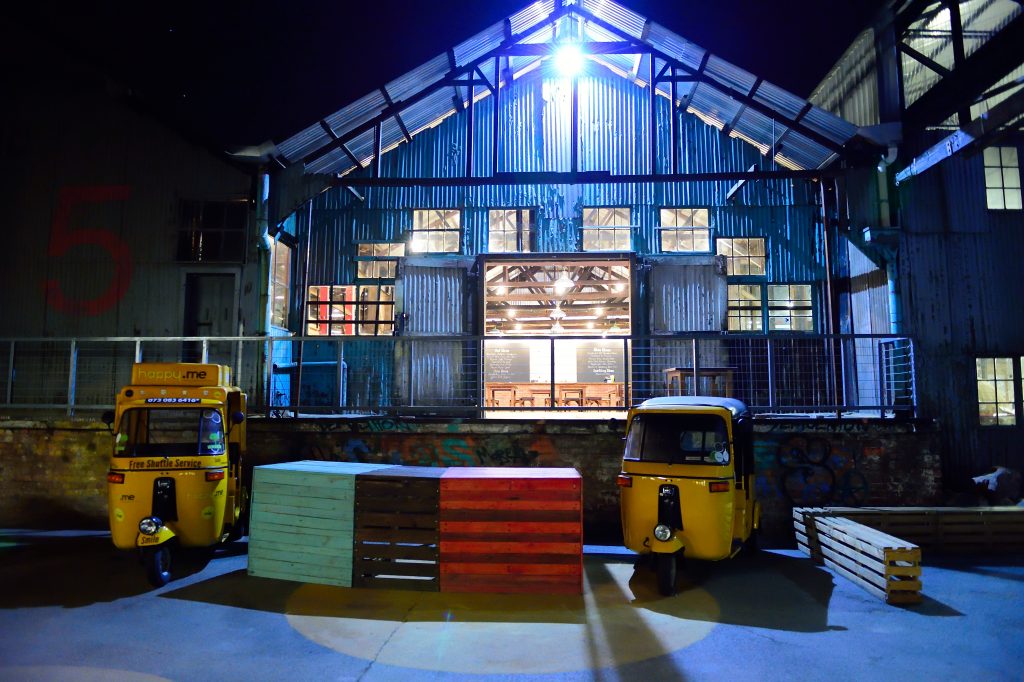
Jonathan Liebmann, a young entrepreneur and founder of Propertuity, has taken on this significant reurbanisation project. From the beginning, Liebmann aimed to maintain the residential and commercial use of the buildings, as well as the people who occupied, lived and worked in the facilities.
Propertuity purchased its first building in 2009, which has since been converted into a beautiful property. The first hundred trees were planted in the pavements surrounding this building.
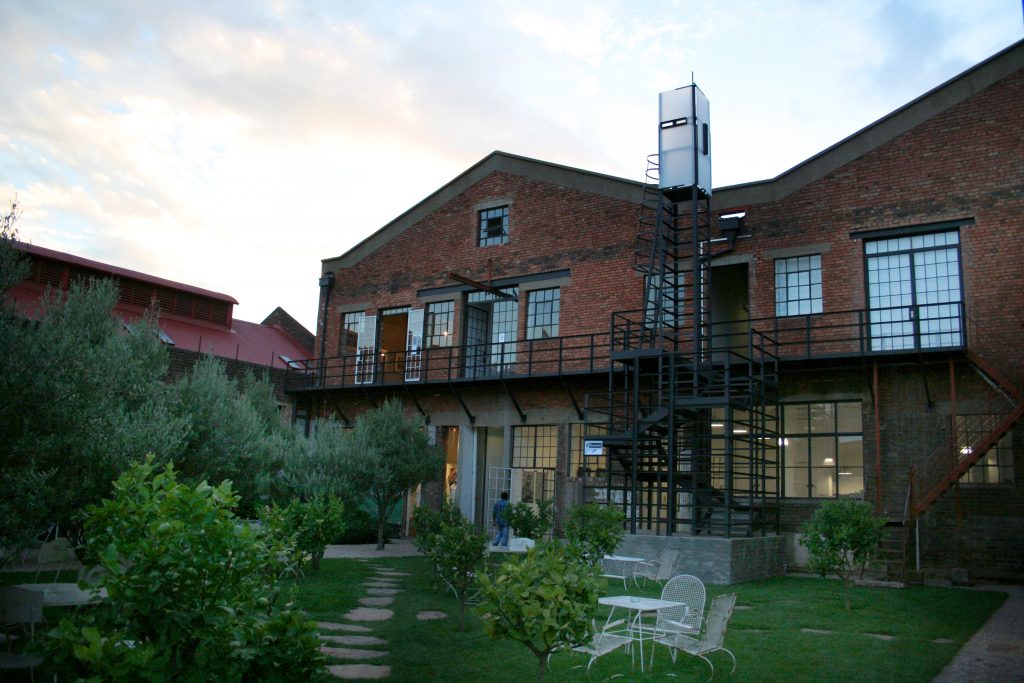
10 years on, 65 different renovations have been carried out, and thousands of trees have been planted, attracting many new residents, entrepreneurs and employees, bringing with them a greater focus on art, craftsmanship and appreciation of local talent.
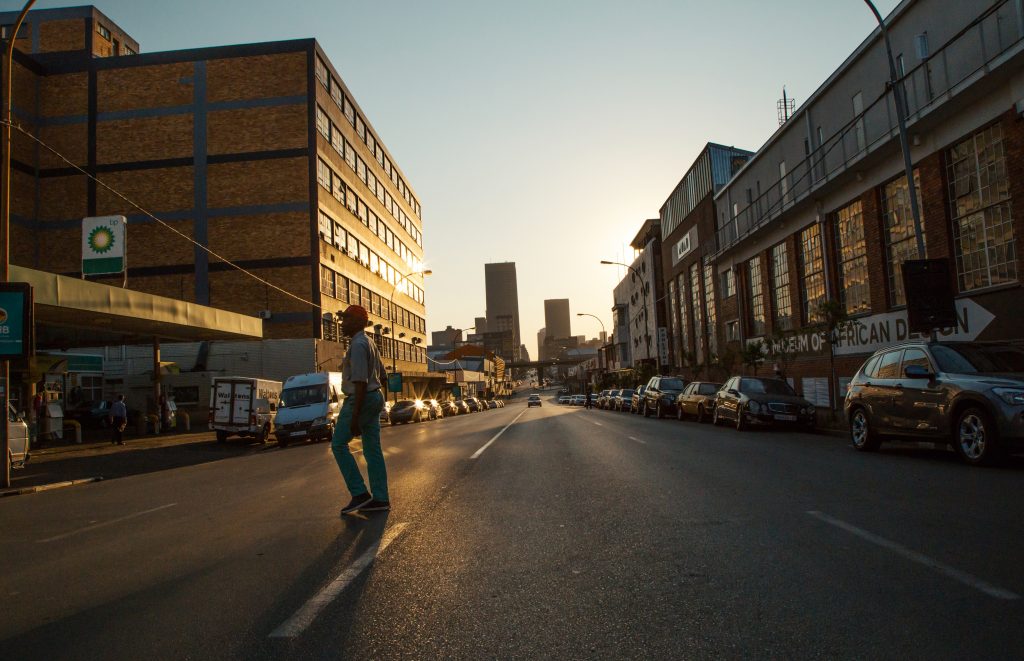
They all co-exist and collaborate with a community spirit that fosters the creation of new projects and an alternative urban lifestyle.
A tour of the neighbourhood’s most iconic spots
ARTS ON MAIN: between artisans and restorers
Propertuity’s first project in Maboneng in 2009, Arts on Main, perfectly illustrated this philosophy. This public space, located on Fox Street in the heart of the neighbourhood, is home to a range of artists’ studios, creative centres, restaurants, crafts stands and fashion stylists, as well as an interesting weekend market.
PATA PATA: for dinner to the rhythm of jazz music
Famous throughout the city, tourists and natives can spend a pleasant evening in this 60’s-style jazz restaurant, where they can eat to the soundtrack of live music in an establishment with a cost, wooden interior.
TRIM PARK: a sports field open to the public
This entirely free infrastructure provides all the equipment needed by locals and visitors for their physical activity. Trim Park is particularly popular with young people who enjoy playing sports after school.
COMMON GROUND PARK: for an outdoor snack
This is Maboneng’s first public park. This vast green space, located on the corner of Van Beek and Beacon Street, is the perfect place to unwind and enjoy an outdoor concert. It is also perfect for students wanting to have a picnic on their lunch break, or for locals to spend an evening looking around its market. Inside, you will find the Grain Café, where you can order healthy sandwiches at all times of the day.
THE MOAD: the first African museum dedicated to design.
The interiors of the Museum of African Design (MOAD), regularly used by staff at the University of Johannesburg, include exhibition spaces for the public and recreation rooms that are open for local artists.
SKATEISTAN: skateboarding as a social tool
This Propertuity-backed association uses the discipline of skateboarding as a tool for the development and empowerment of young people. After classes, students are free to skate around the available space on their boards.
SHARP BRAAI CORNER: the barbecue of Afrikaners
This restaurant dedicated to “Braai” – the African barbecue – is one of Maboneng’s trendiest restaurants. Its ‘shisha nyama’ is widely considered to be one of the best in the area by locals.
THE BIOSCOPE: a neighbourhood dedicated to cinema
At the start of the adventure, Arts On Main temporarily housed The Bioscope. After obtaining a permanent space on Fox Street in 2010, it became the first (and only) independent cinema in South Africa, located in one of the district’s landmarks.
HALLMARK HOUSE: design building and boutique hotel
Completed in 2016, Hallmark House is one of Maboneng’s must-see buildings. Designed by internationally renowned architect David Adjaye, Hallmark House holds a contemporary boutique hotel boasting luxury apartments, a floor reserved exclusively for shops and bars, a gym with a swimming pool, and the Grand Café roof terrace with amazing panoramic views over the city.
DRIVE LINES: a new architectural model
Drivelines Studios has designed around the structure of an old car garage, holding houses and shops inside. The new building, designed by the New York-based company LOT-EK, was built entirely from recyclable materials.
CURIOCITY BACKPACKERS: accommodation in a printing house
This next-gen hostel offers a bar, swimming pool, barbecue area and bike rental service, making it another must-see spot. Others include the Ethiopian restaurant Little Addis Café; Mama Mexicana, in Arts On Main, with its #TacoTuesdays 2×1 offer; Soul Souvlaki, the temple of Greek street food; and each of the architect’s buildings comprising the Maboneng silhouette (Craftsman’s Ship, Market Up, Location East, Evolution House, etc.).
Maboneng has much more to offer…
According to Propertuity, 2020 will mark the end of the first phase of Maboneng’s transformation process. The initial objective, established in the Vision 2020 plan, to turn this district into one of the world’s most attractive neighbourhoods to live, work and go out, is on the verge of being achieved.
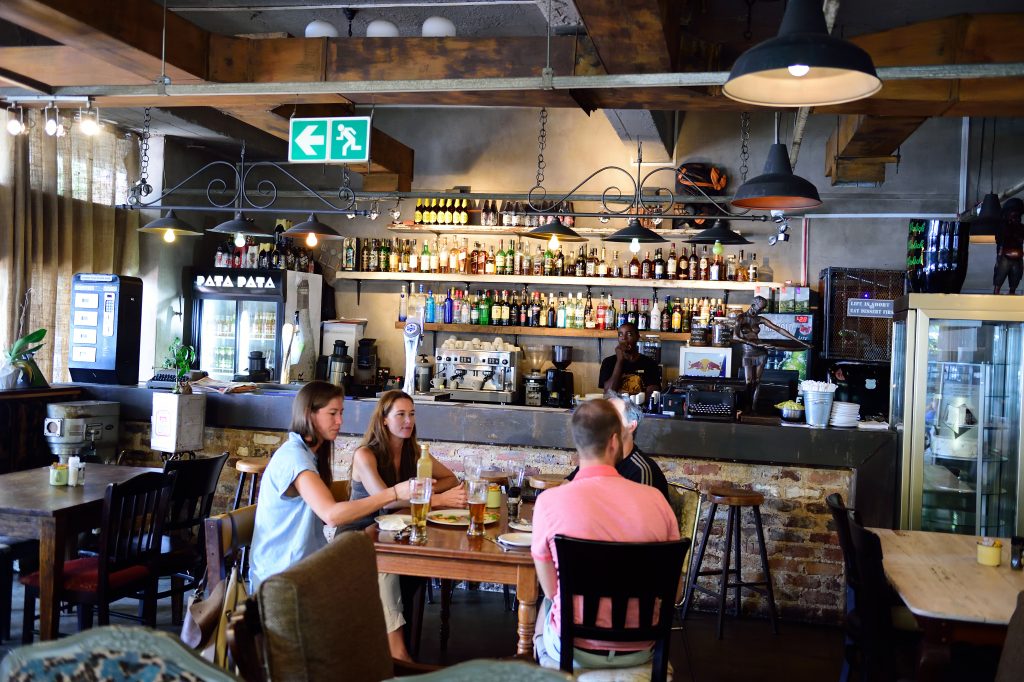
By next year, Propertuity will have attracted more than 27,000 people to Maboneng, making it the world’s largest private company reurbanisation project. The first step forward occurred in 2016 when the project directors started to focus more on reconstruction and improve existing structures than the construction of new buildings.
Nowadays, even the non-Propertuity houses are welcoming new residents. However, the company will continue to implement the strategy of this huge project, focusing on the principles that made it famous: reducing inequalities by encouraging interactions; allowing a mixed-use of premises (houses, shops, offices, laboratories), promoting economic growth; promoting the use of the public space; guaranteeing cleanliness and safety; optimising every square metre to benefit the population; and using increasing amounts of renewable energy, which the neighbourhood has become famous for.



